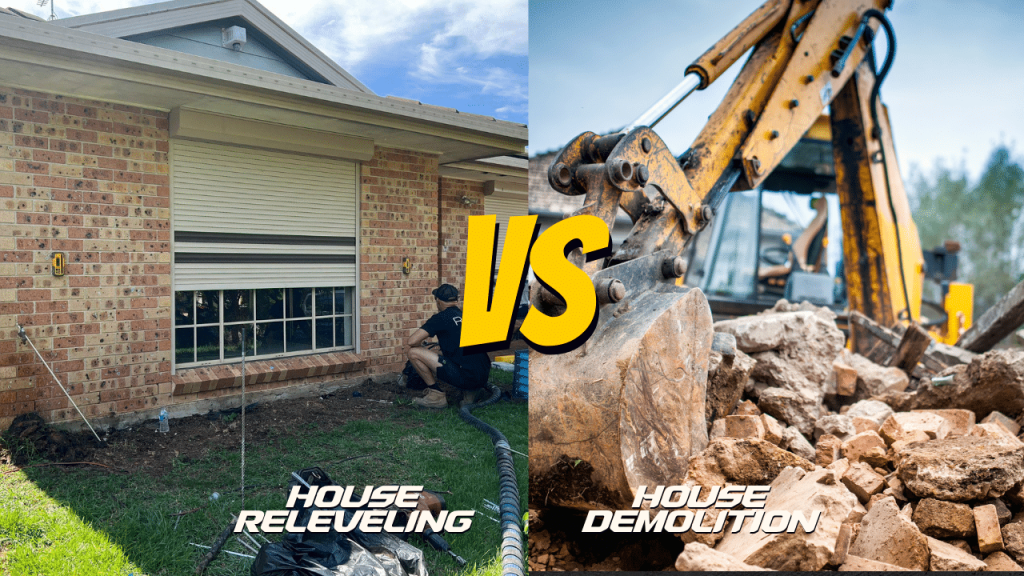Repairing the footings or foundations of a house can be quite an undertaking – whether you’ve just bought one and discovered a fault or have an existing home that’s been rocked by something like a rare weather event, causing a crack in the footing or subsidence (settlement) in the foundation. There are several different methods you can employ when it comes to repairs.
It is essential to understand the following;
- Footings typically describe structural elements in the ground that support the above-ground structure.
- Foundations are the ground itself supporting footings.
Underpinning is a commonly used term that seems to ‘cover all’ footing and foundation problems. However, traditional underpinning is the process of reconstructing a building’s footings. This conventional type of underpinning does not rectify issues with the foundations (ground).
If you think your foundation is compromised, you should have the affected wall inspected by a competent ground engineering practitioner (or certified structural engineer), and they will advise (and sign off) on whatever work will need to be done.
What Is Underpinning?
Underpinning is the term generally used to describe the rectification of dilapidated or damaged footings or foundations. That said, there are several different methods of underpinning. Underpinning can for footing and foundation repair be required to varying depths to maintain the structural integrity of a building. However, not all methods of underpinning can be delivered at all depths.
What Are The Different Types of Underpinning?
Traditional Underpinning
This method of underpinning has been in use for over a hundred years! ‘Traditional underpinning’ is also known as the mass pour method. This method involves hand-digging holes under a high, load-bearing wall, then pouring in concrete in sections to create a new footing- essentially, this method replaces one footing with a new one. Which shores the integrity of the existing foundation, or, if there is no hope of saving the damaged footing, these concrete forms can be used as a direct replacement.
Pile & Beams Method
Used as a more technologically-advanced alternative to traditional underpinning, the pile and beams method can be used at greater depths! These often involve digging out the new foundation area with a mini excavator. Then a concrete pile is installed – essentially a rounded cage wherein concrete can be poured and will be set in place. Using a concrete pile is to achieve greater depth for greater strength – beyond the level of weaker soils and going into the earth’s bedrock beneath the structure, increasing structural integrity.
Chemical Underpinning
In many instances, the issue ‘on hand’ is not about repairing the footing of the building but rather the foundation. Unfortunately, traditional pile & beam underpinning cannot improve the foundations. With ‘necessity being the mother of all invention, ’ chemical underpinning was developed.
Chemical underpinning is the process whereby an expansive structural resin is injected into the foundation (beneath the footing) to achieve serval objectives in one process. Resin injection can fill any void in the foundations (void filling). It can also increase foundation bearing capacity (ground improvement). Once the ground has achieved maximum bearing capacity, the resin’s expansive force can be used to lift the footing (deep lift). In the case of slabs, resin injection can also be used to raise and relevel subsided slabs (slab lifting or slab jacking).
Modern engineering is shifting toward the dual benefits of chemical underpinning being foundation repair and footing remediation in one process.
No matter what your need to repair for footing to foundation rectification, there’s always a repair that’s right for you and your situation. You’ll need to consult with the right people (ground engineering contractors, geotechnical engineers and structural engineers) before choosing the right one.
Make sure that you choose the right one for you and contact www.raiseandrelevel.com





